Articulation – R sound, why is it so dang tricky? Don’t let articulation for R get you down, I got your back! Getting precise articulation of R in therapy can be so difficult, and frustrating – for you and your client! Keep reading for all of my favorite tricks and tips for articulation – r sound.
To gain access to all my freebies related to speech-sound disorders, enter your email below:
Articulation for R
Articulation for R therapy can be one of the most difficult things to treat in speech therapy. But it can also be a lot of fun!
As school SLPs, we usually end up seeing a lot of students for /r/, and at times, this can seem daunting. There’s worry about qualifying too early or starting therapy too late or have students who are life-long speechies. But it doesn’t have to be this way, I promise!
For more on my background as a school-based SLP, check out my bio here.

Articulation R Sound
Let’s start by talking about that tricky /r/ sound. For years, it has been assumed that /r/ is a much later developing sound and shouldn’t be addressed until age 8 or 9. But what if I told you that was way off base and you could have much more success starting earlier? The truth is, while /r/ may very well be a “later developing sound,” most children have developed 90-100% of speech sounds by age 5, with initial and vocalic /r/ sounds developing by age 5-6.
What can we learn from this? Sometimes it IS appropriate to pick up that kinder or first grader to work on /r/ AND you may just get better, quicker results. Which leads to fewer life-longers in speech! Win for everyone.
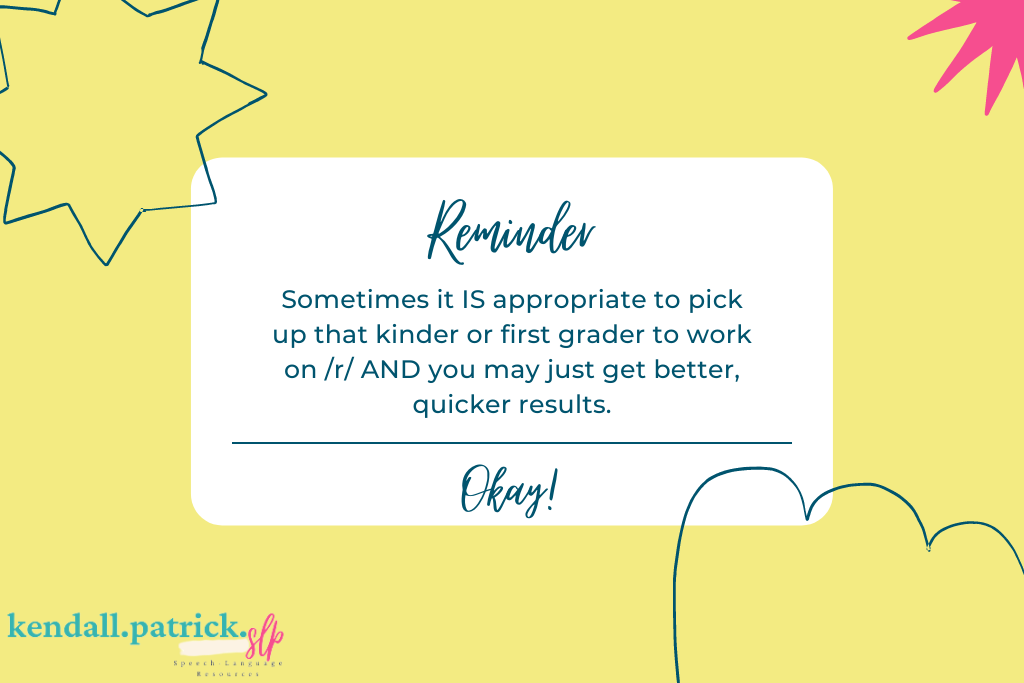
Teaching /r/
There are two different ways to make the /r/ sound and I know plenty of people who make it each way. Some of us even switch back and forth between the two depending on the type or position of /r/ in the word.
The first is retroflex – this is the way I usually start with teaching it just because I usually say my /r/s this way and I think it is easier to explain and understand. I teach my students to lift the tip of their tongue up and pull it back, scraping the top of their mouth if they need to. If the student has a good /l/ sound, you can use that as starting point since the tongue is already lifted. Then have them pull it back across the top of their mouth.
The second is a bunched /r/ – I will usually introduce this if a student is struggling with retroflex after lots and lots of practice, or if the student is unable to lift their tongue due to a structural difference. To teach it this way, I explain that they keep their tongue flat, spread it wide like butterfly wings, keep the tip down, and pull it straight back. It can be helpful to start with a long “ee” sound and tell them to keep everything about their mouth the same (lips pulled back, tongue flat, voice on) and just slowly pull the tongue back until it is bunched. You will hear it change from an “ee” to an “earrr.”
Check out my printable sound cue cards (for /r/ and other sounds) in my store here. These include visual, tactile, and auditory cues for each sound.
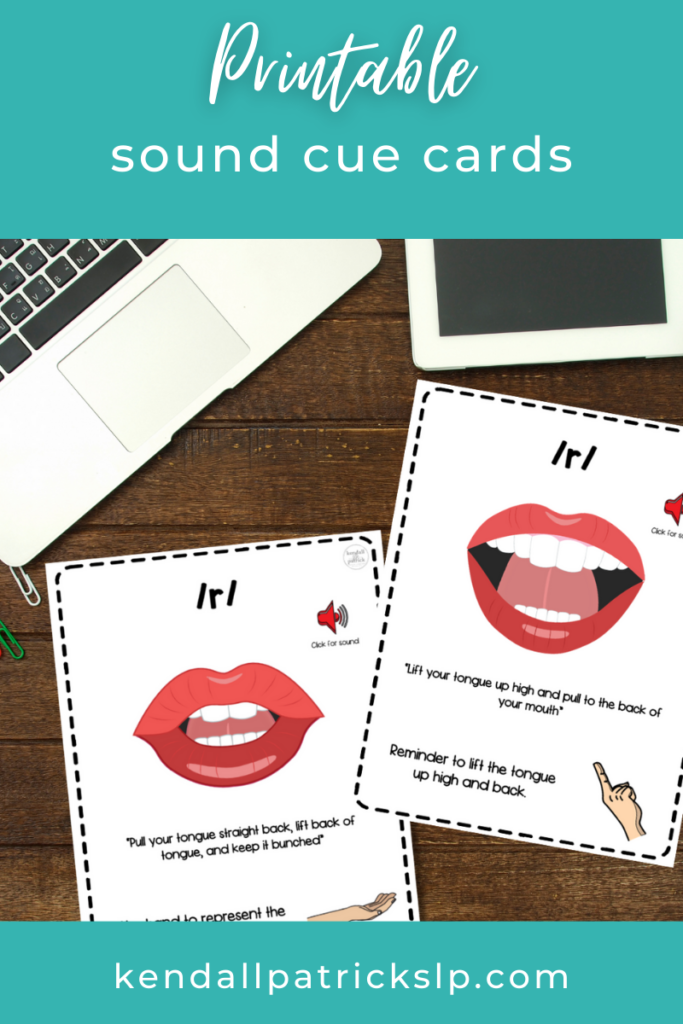
Articulation R Words
After starting with /r/ syllables, I move on to working on articulation – R words in therapy. I start with simple initial /r/ words (e.g., read, write, rock) with a variety of different vowel sounds to follow the /r/. I also start working on initial /er/ words (e.g., Earth, earn) to start developing that vocalic /r/ sound. If the child has a strong prevocalic /r/, then I will use that my advantage and try some coarticulation strategies (or hooking words together – as I will often refer to it as with my kiddos).
This strategy uses the /r/ in an initial position of a word to help the child get the correct tongue position and start to develop that vocalic /r/ sound. For example, “er-red” – use the /r/ in “red” to help them correctly produce the /r/ in the /er/ sound. Then slowly take away the -ed, and then the whole word -red, so that they are just left with /er/.
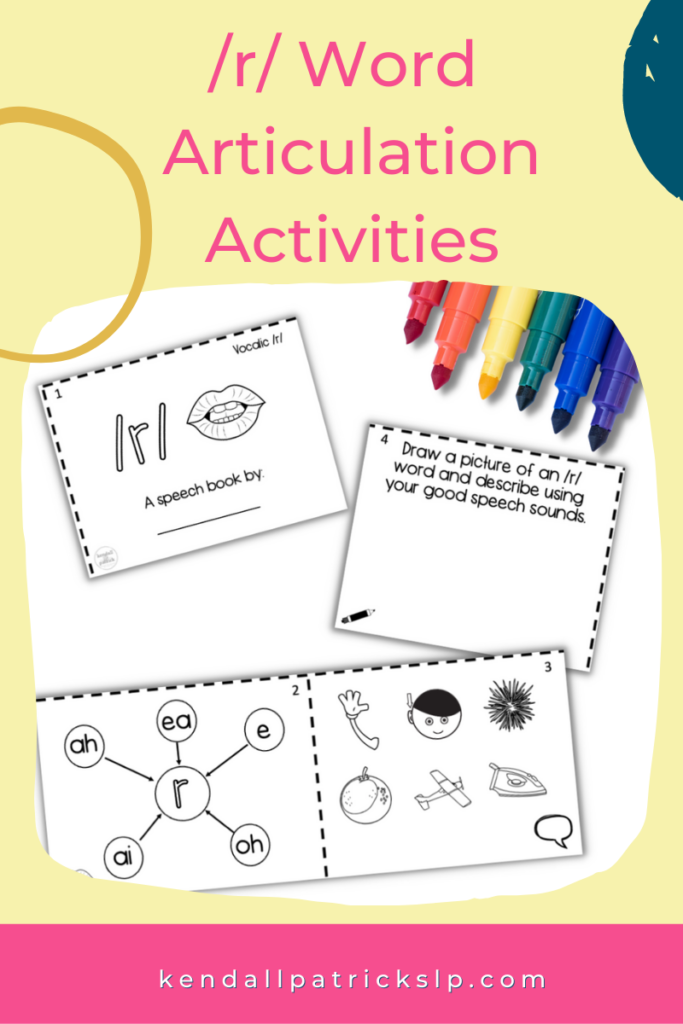
Articulation R Blends
When starting to work on /r/ blends in therapy, I like to start with /kr/ and /gr/ words. For these sound positions (k and g) the tongue is already positioned in the back of the mouth, so it’s a little easier for them to produce that correct /r/ with it.
For word, phrase, and sentence levels, I use an app on my phone for word lists (Word Vault – free version) but you can use any articulation decks, printed word lists, or apps you have.
Articulation R Worksheets
My kids on my caseload this year love to color and I have quite a few working on /r/, so this activity was inspired by them. I have a few articulation color by code activities in my store (you can check them out here). But check out my freebie library to download some free /r/ color by code sheets that your students are sure to love!
I also have some printable worksheets for /l/ and /r/ in all positions, as well as blends, that can be found here.
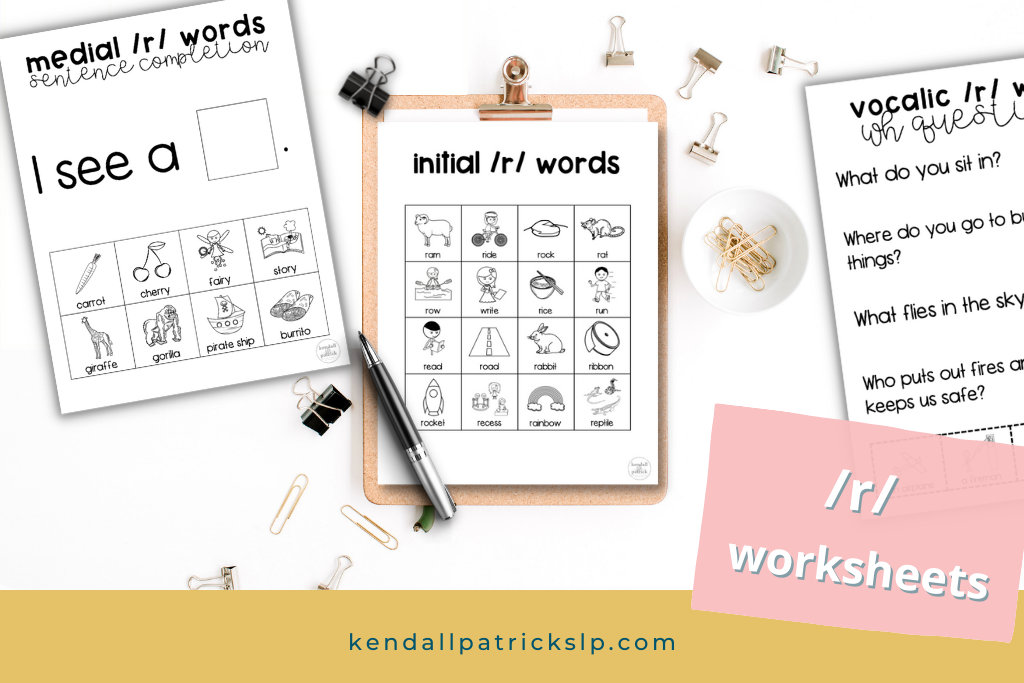
This r, l, and l, r blend worksheet packet has everything you need to work on L and R in all positions of words, l and r blends in words, and target sounds in sentences and answering questions.
The packet includes:
- initial, medial, and final l worksheets
- l blend worksheets
- initial and medial r worksheets
- initial, medial, and final vocalic r worksheets
- r blend worksheets
These l, r, r blends, and l blends worksheets speech therapy tasks are great for in therapy activities and at-home practice.
Articulation R Stories
When my students get to the level where we are working on carryover a bit more (past words, phrases, sentences), I like to have some fun, structured speaking task activities ready for them. I use story dice (the real things or the free apps available), story retell tasks, and fun silly jokes and tongue twisters. These are great for in between sentence level and conversation because they are still a bit structured but they have to think about other ideas as well.
Articulation R Reading Passages
For articulation R reading passages, I like to use the ones on the free version of the Word Vault app (Word Vault – free version). There are a few different stories, at least one for each type of /r/ (initial, blends, and each vocalic /r/ sound).
You can also use just about any reading passages, as /r/ is a commonly occurring sound and frequently found in English language. This can also be a great opportunity to incorporate classroom and grade-level work. Students can bring work or books from class to therapy or work on passages on their grade/reading-level.
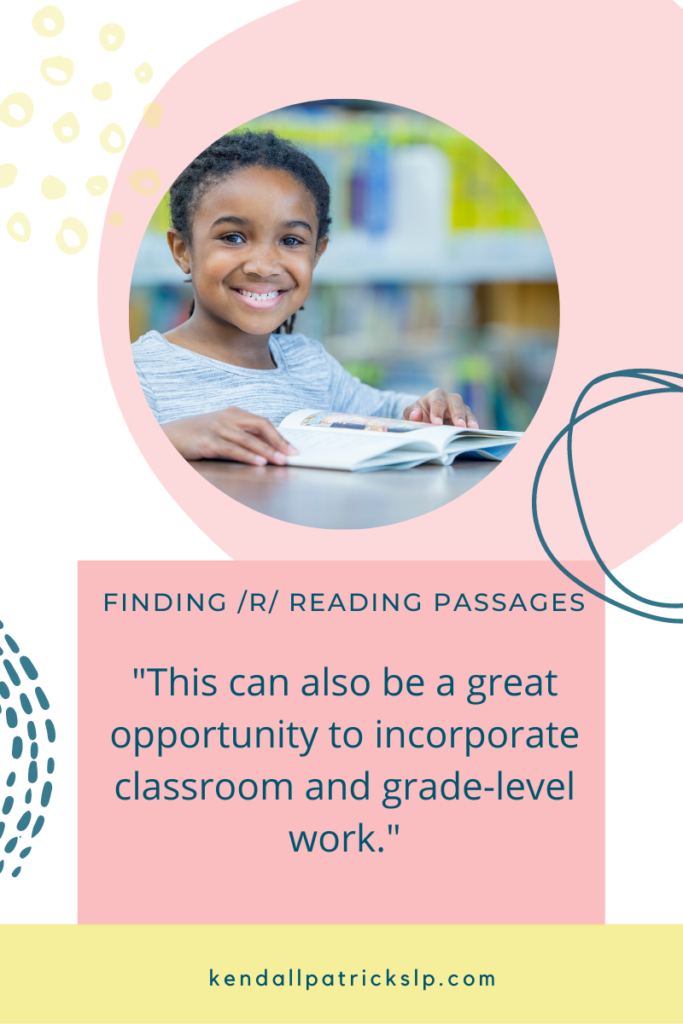
Articulation of R Progress
As with any of our therapy, it’s important to monitor and keep track of their progress. With the /r/ sound it is particularly important to keep track of progress as there are so many variations of this sound.
You may have to track data on 15 sounds, even if /r/ is the only target in therapy.
- Initial pre-vocalic /r/
- Medial pre-vocalic /r/
- /r/ blends – gr, kr, dr, tr, fr, pr, br
- Vocalic /r/ – air, ar, ear, er, ire, or
Data collection
I use these speech therapy data collection forms and screening/progress monitoring tool to keep track of progress throughout the year. This is perfect for semester progress monitoring when progress report time rolls around.
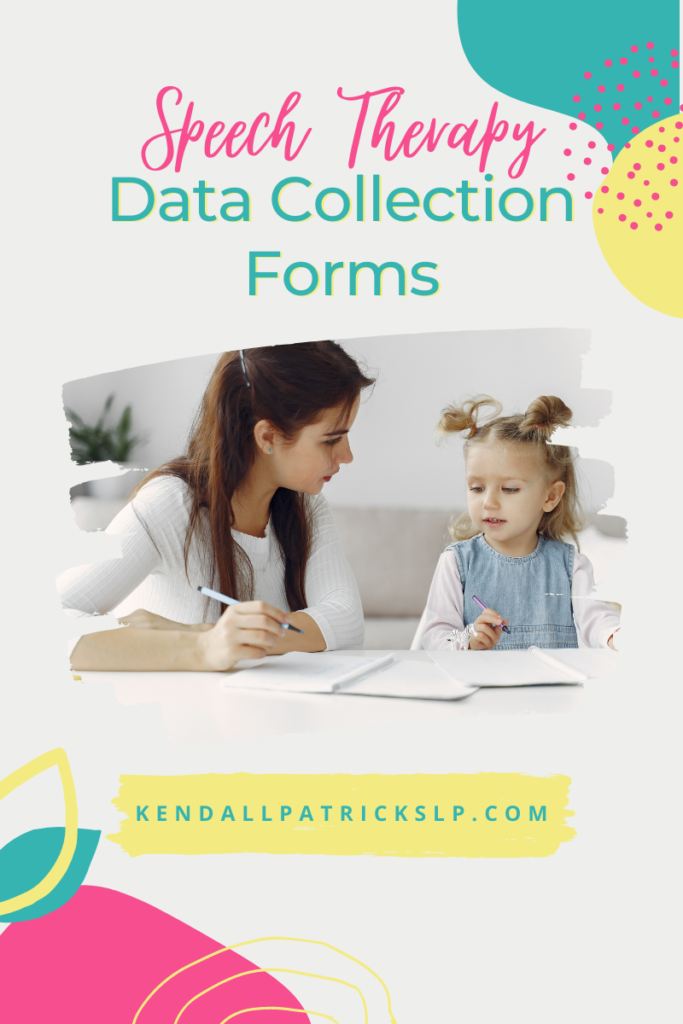
Speech Therapy Data Sheets for R
For the most part, I am still old school and I like to write things down on paper. I am trying to branch out and use more technology, but I still love my paper. (I still use a paper planner too!)
If you’re interested in trying out the speech therapy data sheets that worked for me, I have some in my store. This is a collection of data sheets that I use most often for my different groups and individual therapy. I have a lot of different types of groups and sizes of groups. It is important to take into account the various service delivery models you will be utilizing for your caseload.
I usually have a lot of groups that are seen twice a week for 30 minutes each and that makes up most of my schedule. But I also see kids in a “5-minute kid” model for articulation daily. I have some groups that come 3 or 4 days because of higher needs or the need for more frequent services. I also have some students that are seen just once a week (e.g., in a fluency or social skills group) and I also push-in to our full-time ESE classroom.
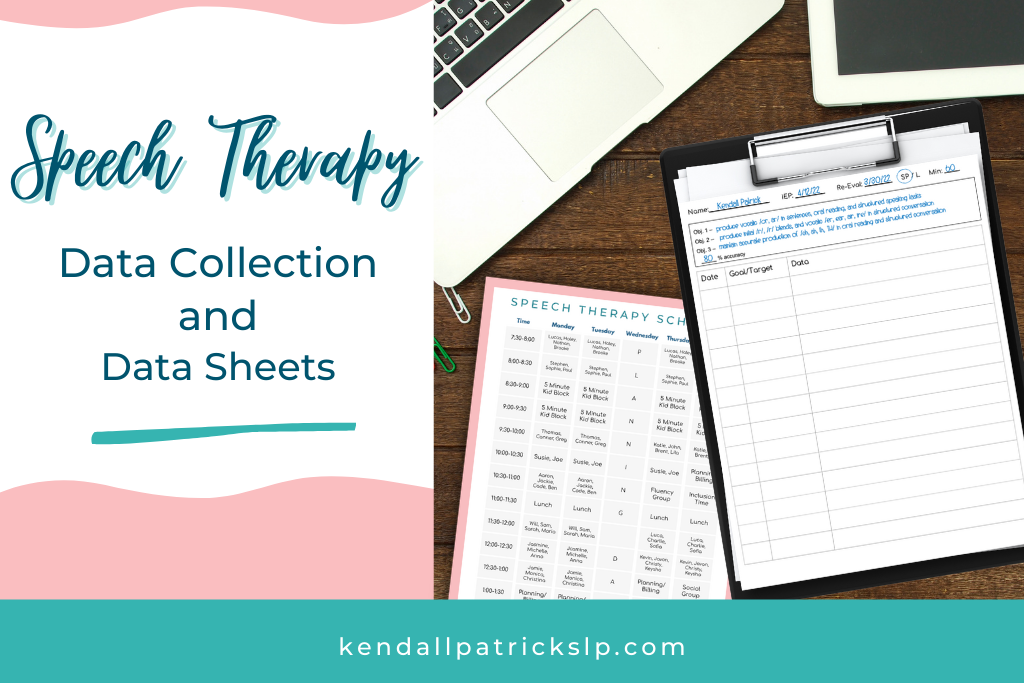
For more information on my different service delivery models and how I schedule them, click here.
Some more of my favorite materials and resources
One of my favorite therapy materials for working on the /r/ sound, is the Step Up to R Workbook from ProEd by Leslie Sparkuhl. You can check it out here. I use this product every single day in therapy with multiple kiddos on my caseload.
These are some great videos from Peachie Speechie that can be used for teaching the /r/ sound in therapy. Go follow her for some more of her awesome content!
More R Therapy Ideas:
R Sound Speech Therapy: Tips to Make an R Sound from Connected Speech Pathology
TECHNIQUES FOR ELICITING THE R SOUND from Speechy Things
How to Teach the /r/ Sound with Christine Ristuccia
Don’t forget to sign up with your email address here to get access to my free library full of some of my goodies made exclusively for my followers.
I hope you found these articulation for R ideas helpful and can use one or more in your therapy room this year. Please leave a comment or shoot me an email if you want to share some of your favorite articulation R therapy tips.


